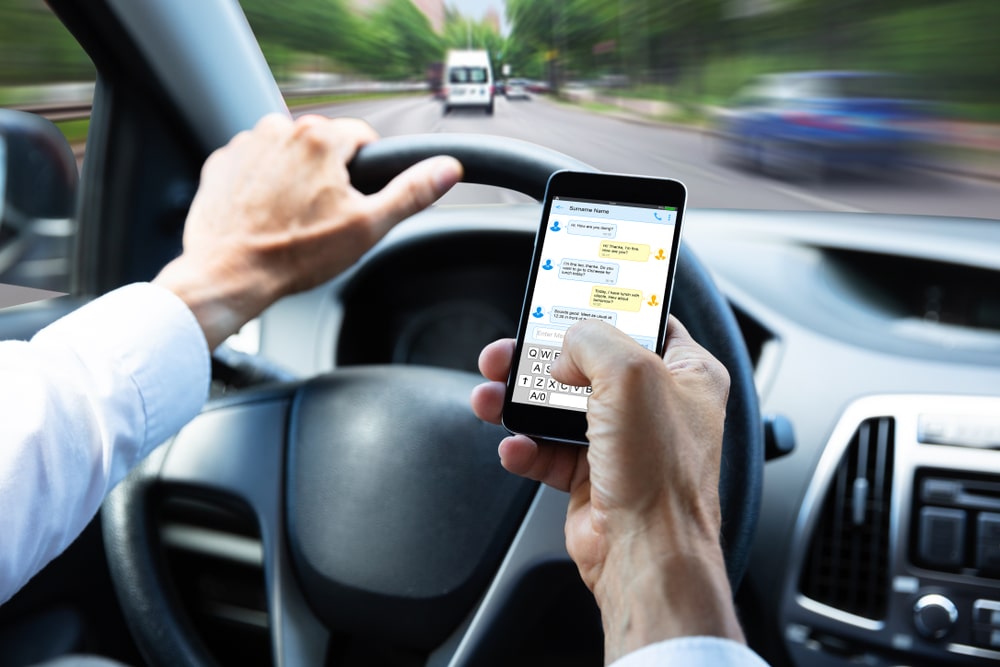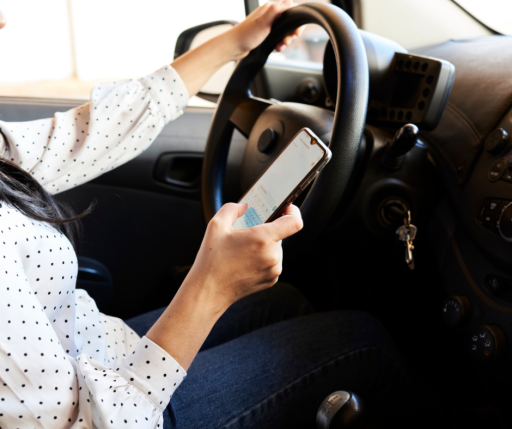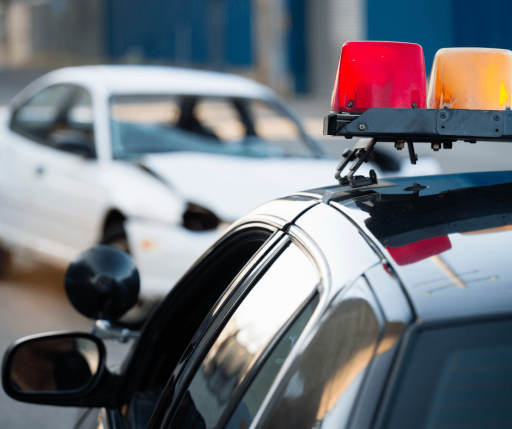“Distracted driving” has become a buzzword, but what does it mean? And how can you avoid it?
Every year, distracted driving claims thousands of lives. In 2020 alone, it was responsible for 3,142 fatalities (8% of all crash deaths) and countless non-fatal accidents.
Fortunately, you can avoid distracted driving and stay safer on the roads.
In this blog, we’ll provide a definition of distracted driving, offer prevention strategies, and provide guidance on what to do if you’ve been in a distracted driving accident.
Let’s dive in.
Distracted Driving 101
Distracted driving is the act of driving while taking part in any distracting activity.
Examples include the following:
-
Texting
-
Eating
-
Drinking
-
Talking on a handheld device
-
Applying makeup
-
Updating your navigation system
Of all those distractions, though, texting is the most problematic.
According to the National Highway Transportation Safety Administration (NHTSA), reading or sending a text while driving 55 mph takes your eyes off the road for five seconds. That’s the equivalent of driving the distance of an entire football field with your eyes closed!
With that in mind, it’s easy to see how dangerous distracted driving can be.
How Common is Distracted Driving?
Distracted driving is alarmingly common, especially among younger drivers. In 2019, drivers ages 15-20 were responsible for more distracted driving crashes than drivers aged 21 or older.
Additionally, a 2019 survey of high school students in the US found that 39% of high school students who drove reported texting or emailing while operating the vehicle.
The same study found that students who texted or emailed while driving were also less likely to wear a seatbelt and more likely to ride with a driver who had been drinking or to drive after drinking.
How to Prevent Distracted Driving
Distracted driving is dangerous, but it’s also preventable. Here’s what drivers can do to make the roads safer:
-
Avoid multitasking while driving. Complete simple tasks like adjusting your mirror, programming your navigation system, selecting a podcast, and putting on sunglasses or applying makeup before you leave the driveway. This helps you stay focused on the road during your trip.
-
Enable “do not disturb” on your phone. Most modern smartphones have “do not disturb” functionalities built in. These settings can detect when you’re driving and silence all texts and phone calls for the duration of your journey. Some will even send an automatic response text that tells people you’re driving and will respond when you stop. In addition to helping you stay safe, this is a great way to encourage others to do the same!
-
Lead by example. Young drivers and teens are most at risk for distracted driving. If you have kids at home, be sure to lead by example. Never drive while distracted, and prioritize open and honest conversations about the dangers of distracted driving.
-
Pull over if you need to. If there’s something that requires your attention during driving, pull over to deal with it. Wait until you’re in a safe place and the car is in park to pick up your toddler’s cup, answer that urgent tex, or tend to other distractions.
-
Practice defensive driving. Defensive driving is the process of being aware of your surroundings and learning to protect yourself on the road. Check out our defensive driving guide here.
-
Familiarize yourself with distracted driving laws. Most states have distracted driving laws, many of which prevent drivers from using cell phones. To become a safer, more responsible driver, familiarize yourself with the laws in your state. Here’s a great state-by-state breakdown to help you get started.
What to do if You’ve Experienced a Distracted Driving Accident
If you’ve been in an accident involving a distracted driver, stay calm and follow these steps:
1. Call 911
Even if you aren’t obviously injured, it’s important to call 911. First responders will arrive to check for injuries, and the police will arrive to evaluate the scene and provide a written accident report. You’ll need this report later when you file an insurance claim.
2. Document the scene
While you wait for the police to arrive, take photos of the accident scene. Pay special attention to the damage to each vehicle, the surroundings, and any traffic signs or lights nearby. You’ll also want to get contact information for any witnesses that saw the accident.
3. Visit the doctor
Some injuries are obvious after an accident. Others can take days or weeks to show up. Because of this, it’s important to see a doctor as soon after the crash as possible.
A doctor will provide a comprehensive evaluation and follow-up treatment as needed. If you sustained injuries during the crash, they’ll be able to provide medical records and treatment recommendations for you to present to the insurance company.
4. Hire an accident attorney
Last but not least, it’s critical that you hire a personal injury lawyer. Distracted driving cases can be difficult to navigate, and a personal injury lawyer will provide the guidance you need. If your case goes to court, you’ll need an attorney to represent you.
Even if you settle your case outside of court, an attorney can help ensure you get the largest payout possible and that you have the time and space to heal while entrusting your case to skilled legal counsel.
Ward and Barnes is Here for You
While most of us want to believe that other drivers are cautious and careful, the reality is that many are multi-tasking while driving.
This creates a dangerous environment on the roads and can lead to distracted driving accidents. If you’ve been injured in an accident with a distracted driver, you do not have to navigate the aftermath alone.
Here at Ward & Barnes, we’re proud to provide a team of skilled Pensacola accident attorneys to protect your best interests. Contact us today to learn more about our services and how we can help you, or to schedule your consultation.




